In this two part conversation with Nadine Chahine, we dig into Arabic type design, and how it is to distribute fonts from indie foundries in a market with one gigantic monopoly player. Start with Part 1 or continue to Part 2.
Part 1: Arabic Type Design & Typography
Dr. Nadine Chahine is an award-winning Lebanese type designer, and behind the design of the typefaces Frutiger Arabic, Neue Helvetica Arabic, and Palatino Arabic, just to name a few. While she is the director of her own foundry, Arabic Type, Nadine also joined I Love Typography as CEO, a beautiful and fair place to discover and license indie fonts.
In this first part, you will learn about Arabic typography, but also about type design in general:
- Nadine shares the horrible state of Arabic typefaces in the late 90ies,
- Why Arabic script has been neglected for so long,
- That a typeface is a series of conversations, and
- What Pokémon and learning about typography have in common.
Nadine is truly the queen of metaphors. Even if you’re not into type, you will be infected by her passion for it.
Listen to it as Podcast
Next to the video of Part 1 on YouTube, you can also listen to this episode audio only. You can find it on Apple Podcasts and Spotify, or simply listen to it here:
Talking Points
00:00 – Intro
02:15 – Greeting to Nadine Chahine
03:32 – How Nadine discovered typography
06:43 – The horrible state of Arabic typefaces in the 90ies
09:04 – Why Arabic typography was neglected for so long
11:57 – A typeface is a series of conversations
17:02 – Why knowing about type is so helpful for everyone
15:07 – A good typeface is not modular
18:57 – Type as an ingredient
22:23 – Learning about type is easy
Addition: Arabic Script in InDesign
After releasing the first part, Yvonne Frank, who is specialized in multilingual publishing, replied to my newsletter and shared with me a great guide she created for setting up InDesign for Arabic text, even if you don’t speak any Arabic. Get it here (German only)
Part 2: Distributing indie fonts in a monopoly market
When it comes to distributing fonts, there is only one dominant player in the market – Monotype. You might even call it Monopolytype 😉. In the last 15 years, it acquired every big or notable competitor. What disadvantages this has for designers and buyers, you will find out in the second part of our conversation.
I asked Nadine, what motivated her in this highly competitive market to start a marketplace for fonts? We dig into:
- How the landscape for licensing typefaces was 15 years ago, and how it is today,
- Explain the imbalance in the type design industry with a monopoly on one side, and
- What I Love Typography does differently.
We also talk about CEDARS+, a super cool tool to learn about fonts while discovering them. I think it can even be a helpful addition to client briefings.
Listen to it as Podcast
Next to the video of Part 2 on YouTube, you can also listen to this episode audio only. You can find it on Apple Podcasts and Spotify, or here:
Talking Points
00:00 – Intro
01:52 – How is it to run a font marketplace?
06:20 – About the monopoly of Monotype
13:02 – The environment for new type designers
20:48 – Why sans or serif are not the primary differentiator
23:58 – CEDARS+ A cool tool to discover typefaces
28:30 – Lessons learned after one year of distributing fonts
33:29 – Are there distinct categories like sans/serif for Arabic?
37:40 – Do we need Papyrus Arabic or Comic Sans Arabic?
38:54 – Goodbye
Pimp my Type is affiliate partner
I really want the shop on I Love Typography to be successful. Our industry deserves an alternative to Monotype. With a well curated and divers collection of quality typefaces, convenient for buyers, while offering fair conditions for the foundries. This is why I joined as an affiliate partner for I Love Typography. In this article and in my Font Friday recommendations, I added affiliate links, if a typeface is available on ILT. So by purchasing a typeface, you can now also support Pimp my Type with a tiny amount.
Quotables
“Don’t think that type design is designing letter forms. In reality, you design words and paragraphs. What’s the point of drawing beautiful letters if the words look ugly?”
“A typeface is a series of conversations happening between letter forms.”
“Type design is not modular, it’s conversations of things that are related to another, existing together but not being the same.“
“Sometimes the point of the typeface is to disturb, to do something unexpected. To be different.“
“Type is an ingredient, you’re cooking with it whether you like it or not. The moment you are engaging in design that includes text, you are already engaging in typography.”
“When we come into type design, we should not take a normative view of the aesthetics. We should take a normative view of the functions.”
“Using type but not learning about typography is like talking to people but knowing what you’re telling them.”
“If there is only one big distributor in the market [Monotype], you get arm twisted into accepting conditions you should never accept.”
“Center the relationship and the health of the design industry, both for the creators and the users to type, and you know that conversions will come.”
“We need to have a healthy ecosystem. We need creative people to continue to be creative. We need to reward that. We need to respect their rights.”
“The worst thing that we inherited from the last ten years of MyFonts is that they made distributors a bad word.”
“The serif is the instroke and outstoke. It’s the terminal, how the letters are finished. And there are many letters that don’t have them.”
